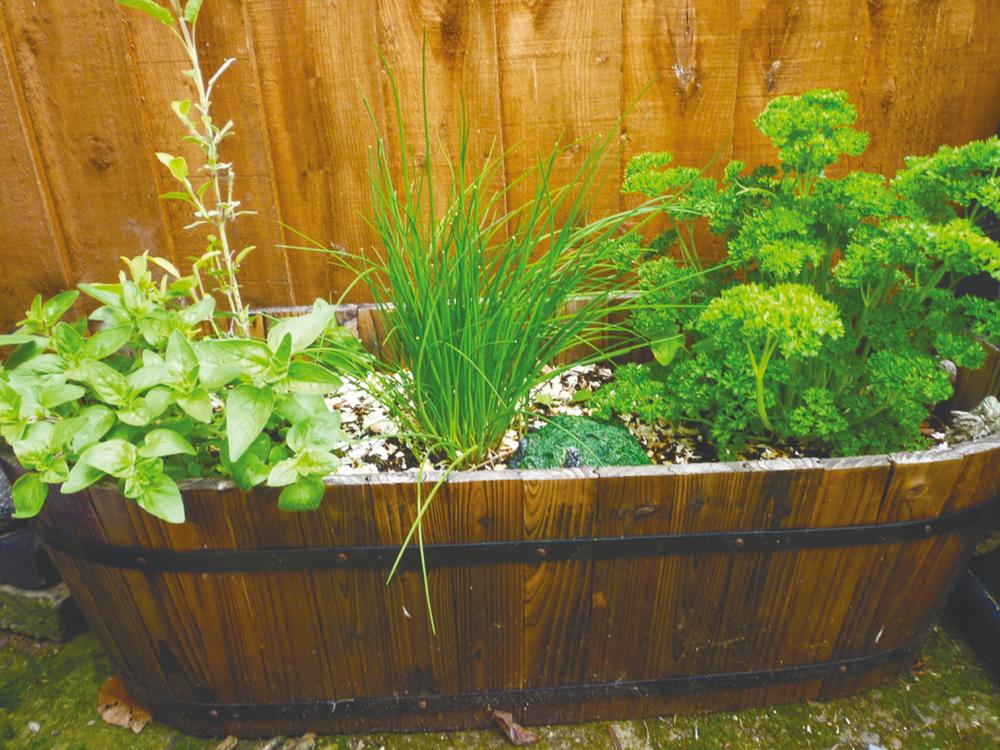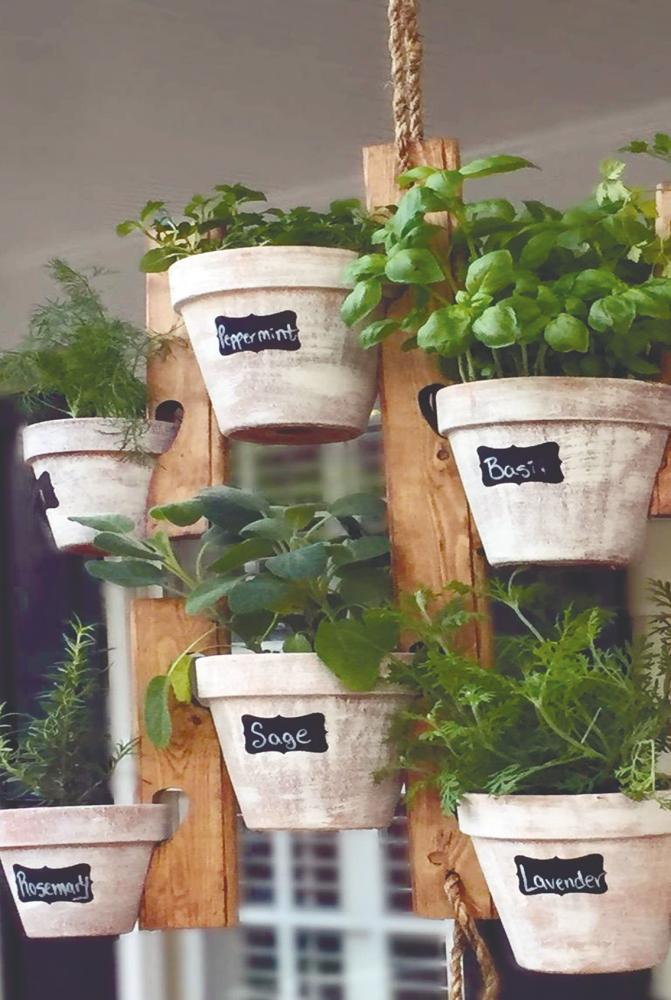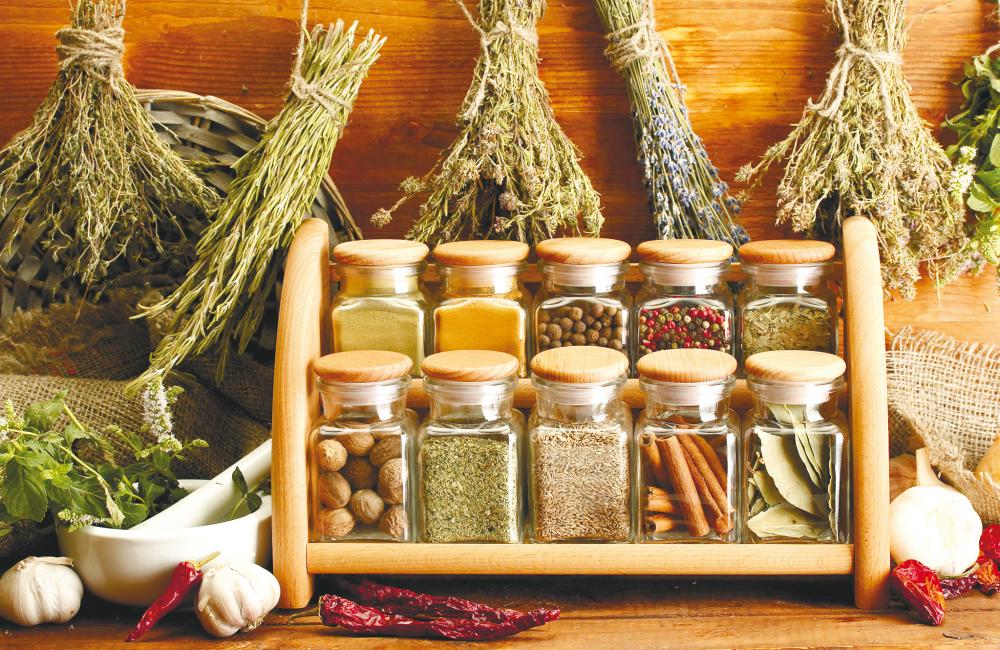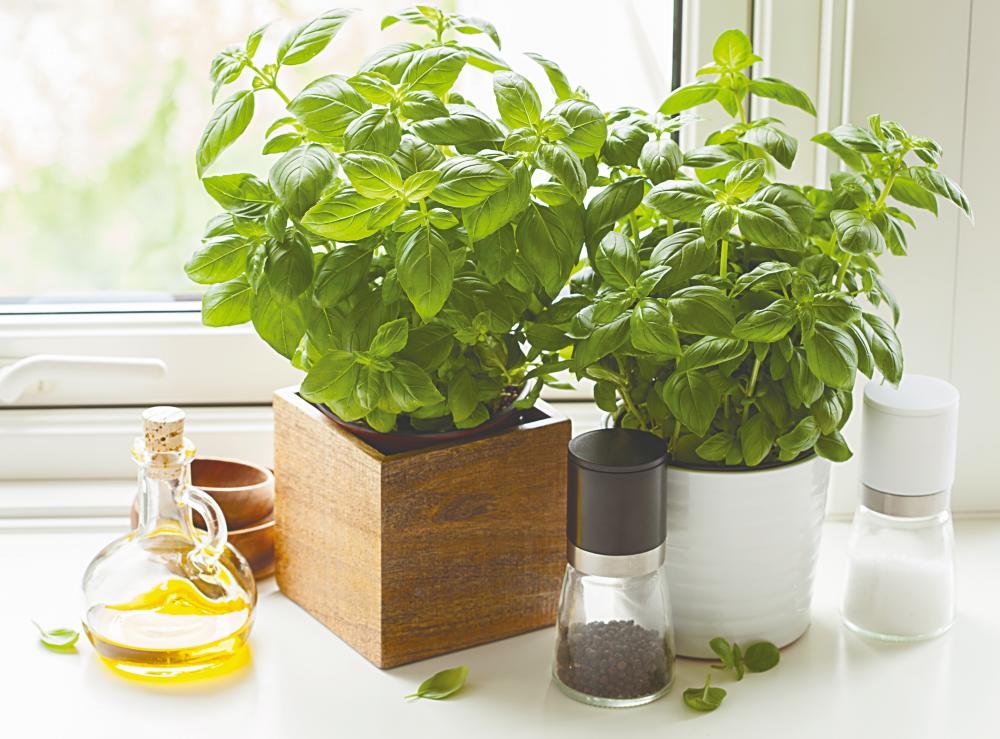Have you ever watched in wonder and envy when celebrity chefs turn around in their immaculate kitchens to harvest fresh herbs from cute little countertop pots?
Wonder no more, as you too can grow your own fresh herbs and spices to help elevate your cooking to Masterchef levels with this simple guide.
There are generally two methods to plant herbs. In your backyard garden, or in pots.
Planting herbs in the garden

1. Make sure there’s ample space
If you live on landed property and plan to start your herb garden, it is advisable to make sure there’s ample space.
Just like any living thing, herbs need ample space to grow healthily and abundant. The first step is to make sure you have enough space to plant herbs.
You need approximately 1 to 4 feet in diameter for each plant to grow, depending on the plant.
For starters, herbs such as Rosemary, Sage, Mints and Oregano need 3 to 4 feet of space.
Herbs like basil, thyme and tarragon require 2 feet of space. Smaller herbs such as parsley, dill, chives and cilantro need about one foot of space.
2. Prepare the soil
Next, it’s time to prepare the soil. Use a garden fork to loosen the compact soil to help aerate the soil. Loosening the compact soil will help water to drain later too. Once that’s done, layer an inch of compost on the soil to act as fertiliser for the plants and to prevent drainage problems.
3. Ready to plant
The last step is to plant strong and healthy herbs. The herbs should be watered when the soil becomes dry. A way to check for dry soil is to stick a finger into the soil. Be aware of overwatering because it can lead to root rot which can kill the whole plant.
Here is a list of top herbs to grow at home.
4. Harvest correctly
It’s important to harvest the herbs correctly to ensure bountiful growth. Cut off about 1/3 of the branches when the plant is at least 6 to 8 inches tall. For leaves, make sure to cut close to the leaf intersection to ensure quick plant growth.
Planting in containers

1. Get a large pot with drainage holes
Some herbs don’t do well in small pots. As such, getting a large pot or container from the get-go is a safer bet and gives plenty of room for your beautiful herbs to flourish.
To save space and be economical, it’s smart to combine several herbs that have the same watering requirements in the same pot. It’s advisable to get pots with drainage holes so that excess water can flow through during watering.
To prevent mess when it’s time to water, place a plate under each pot to catch the excess water. The excess water can be discarded to prevent the soil from getting too moist and to prevent root rot.
2. Get good potting soil and fertilizer
Once you have decided on the pots, it’s time to fill the pot with good potting soil. Generally, it’s good to follow the instructions which come with the herb package. Before planting the herb, add water to the soil to moisten it all the way through.
3. Start planting
Dig some holes in the soil with a large enough space for your herbs. To release the herbs from their starter containers, turn the container upside down and tap the bottom while gently pulling the base of the plant. Once it’s out from the container, place the herb into the hole and press soil around the stem to fill. Remember to water the plant immediately after planting.
4. Water just enough
To check if the soil is dry, stick a finger into the soil. It’s best to water all the way through so the roots can grow all the way to the bottom of the pot. Overwatering is more likely to kill a plant than when it’s underwatered. As such, remember to discard the excess water collected in the plate after watering the plants.
5. Make sure it gets enough sunlight
The herbs need at least 4 hours of sunlight per day. To prevent leaf sunburns, do keep the plants in an area with some shade.
6. Harvesting right
To harvest the herbs grown in pots, remember to cut close to a leaf intersection so the herbs can regrow quickly. For herbs such as basil, just pinch off the tops regularly. Don’t worry too much about this because two stems will grow in place to allow for a large, bushy plant!
Preserving Your Garden Herbs

If your herb plants are producing too quickly for the family to consume, you can try drying them for storage. Air drying is an easy and inexpensive way to preserve excess herbs. This method can also help retain the essential oils of the herbs, which helps to maintain their flavour. Alternatively, you can also dry herbs in a food dehydrator or in your oven.
1. Air-Dry Method
-> Gather 5-10 branches together and tie them with string or a rubber band. The smaller the bundle, the easier and faster they will dry.
-> Put the bundle of herbs, stem-side up, in a paper bag. Tie the end of the bag closed making sure not to crush the herbs and poke a few holes in the bag for ventilation.
-> Hang the bag by the stem end in a warm, well-ventilated room.
-> Your herbs should be dried and ready to store in about a week.
2. Oven-Dry Method
-> Place herb leaves or seeds on a baking sheet that is one inch deep or less.
-> Heat your oven to 100 degrees Fahrenheit and place your herbs in.
-> Leave the oven door ajar so that the oven does not get too hot and excess moisture can escape.
-> Dry the leaves for 30 minutes, then turn them over once. Continue drying for an additional 30 minutes.
-> To see if the herbs are dry, check if the leaves crumble easily. It is unavoidable for oven-dried herbs to cook a little, thus removing some potency and flavour, so you may need to use a little more in your cooking.
-> With both methods, you’ll know the herbs are dry when leaves crumble easily.
3. How to Store Dried Herbs
Once you have dried your herbs, they are ready to be used right away, but more often than not, you’ll want to store the herbs for later.
Either crumble the dried herbs with your fingers or crush them in a pestle and mortar. Remember to discard any hard stems that you may find.
You can also leave some herbs whole, which helps in retaining their aromatic oils better.
Place the processed herbs into small, airtight containers, and keep them in a cool, dark place like a cupboard.
Dried herbs will keep for between six and 12 months, but the sooner you use them, the more flavour they will have. You can also give them to friends and family as gifts.
The global pandemic has forced a lot of people who are stuck at home to pick up new hobbies and DIY projects with investing in a personal herb garden being one of the favourites.
You can purchase everything you need online during this lockdown period and have it delivered right to your doorstep.
This article was first published in theSun Buzz Herb Garden edition. Here’s a list of top herbs to grow at home.










